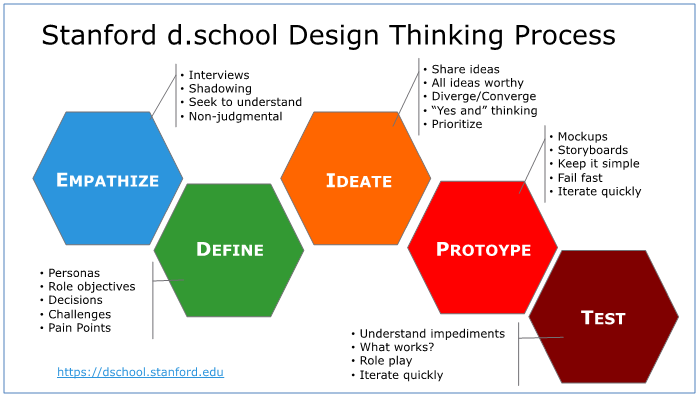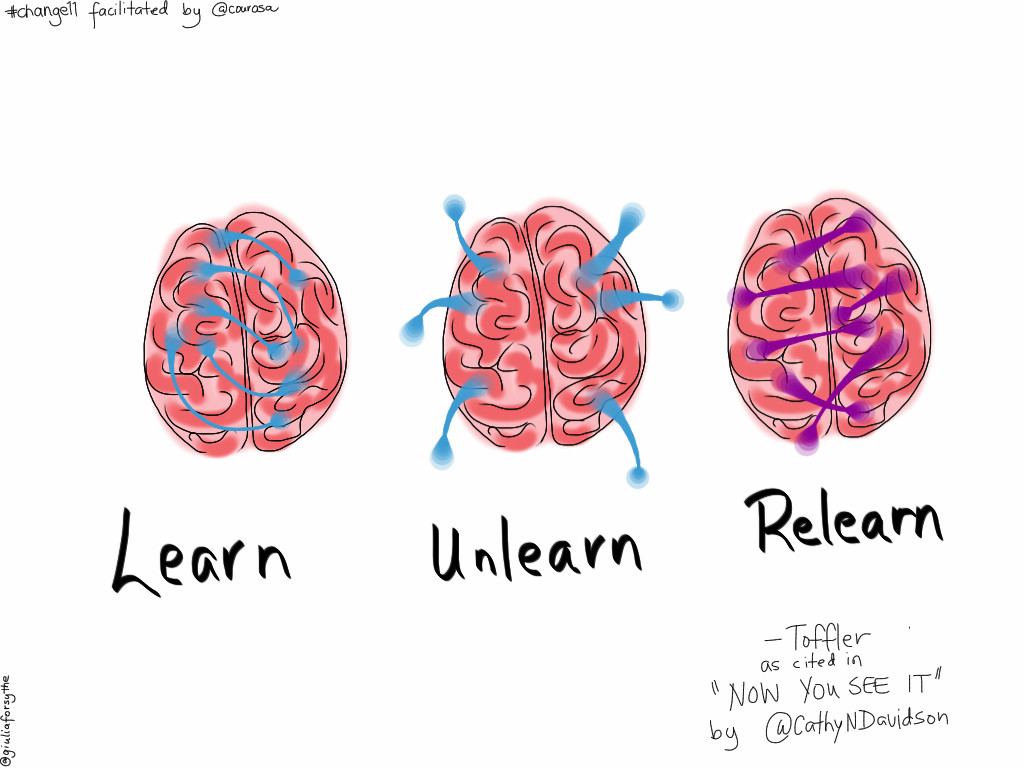Is Design Thinking important? We think it is – it’s one of our 8 building blocks for digital transformation. But what is it, and why? In the run up to the Global Legal Hackathon, we thought we’d distil our workshop slides and ideas on the topic in to this blog post to explain it.
Let’s set the scene with five quotes from experts and artists you will recognise explaining what design really is:
“The ultimate defense against complexity” – David Gelernter, Professor of Computer Science, Yale
“Simplicity is the ultimate sophistication” – Leonardo da Vinci
“Design is a way of changing life and influencing the future” – Sir Ernest Hall. Pianist, Entrepreneur, and Philanthropist
“Most people make the mistake of thinking design is what it looks like. People think it’s this veneer – that the designers are handed this box and told, ‘Make it look good!’ That’s not what we think design is. It’s not just what it looks like and feels like. Design is how it works.” – Steve Jobs
“Design-thinking firms stand apart in their willingness to engage in the task of continuously redesigning their business… to create advances in both innovation and efficiency – the combination that produces the most powerful competitive edge.” – Roger Martin, author of the Design of Business
In that last quote Roger Martin equates Design Thinking with being able to continuously redesign your business, and “continuous reinvention” is another of our building blocks for digital transformation. In fact we think it’s the most important ingredient. So the approach has goodness, but does it have any real value?
The Design Value Index
When design principles are applied to strategy and innovation the success rate for innovation dramatically improves. DMI and MotivStrategies, funded by Microsoft, began analyzing the performance of US companies committed to design as an integral part of their business strategy. The Index tracked the value of 15 publicly held companies – Apple, Coca Cola, Ford, Herman-Miller, IBM, Intuit, Newell-Rubbermaid, Nike, Procter & Gamble, Starbucks, Starwood, Steelcase, Target, Walt Disney and Whirlpool. According to their 2014 study, they have outperformed the S&P 500 over the past 10 years by an extraordinary 219%.
What is Design Thinking?
The topic has a history right back to the 60s and a lot of thinkers and contributors have been involved. In 1987 Peter Rowe of Harvard published Design Thinking; his book provided a systematic account of the process of designing in architecture and urban planning. In 1991 the design company IDEO was formed and showcased their design process, which drew heavily on the Stanford curriculum. They are widely accepted as one of the companies that brought Design Thinking to the mainstream. Then in 2005 Stanford’s d.school began teaching design thinking as a formal method. Take a look at IDEO’s Sir David Kelley in his excellent 2007 TED talk (see below) explaining that product design has become much less about the hardware and more about the user experience.
It is a user-centred approach to problem solving with these ingredients:
- Human centred
- Mindful of process
- Show don’t tell
- Bias towards action
- Radical collaboration
- Culture of prototyping
Nigel Cross (2007), in his book Designerly Ways of Knowing, says, “Everything we have around us has been designed. Design ability is, in fact, one of the three fundamental dimensions of human intelligence. Design, science, and art form an ‘AND’ not an ‘OR’ relationship to create the incredible human cognitive ability.”
- Science — finding similarities among things that are different
- Art — finding differences among things that are similar
- Design — creating feasible ‘wholes’ from infeasible ‘parts’
The classic flow of Design Thinking is to:
- Empathise (search for rich stories and find some love)
- Define (user need and insights – their POV)
- Ideate (ideas, ideas, ideas)
- Prototype (build to learn)
- Test (show, don’t tell)
- Start all over and iterate the flow as much as possible
Empathise – Empathy is the foundation of a human-centered design process where you observe and engage with users and immerse yourself to uncover their needs. Look for issues they may or may not be aware of. Think in terms of guiding innovation efforts and identify the right users to design for. Look to discover the emotions that guide their behaviours.
Define – The define mode is when you unpack and synthesize your empathy findings into compelling needs and insights, and scope a specific and meaningful challenge. It’s critical to the design process because it explicitly expresses the problem you are striving to address through your efforts. Often, in order to be truly generative, you must first reframe the challenge based on new insights you have gained through your design work.
Ideate – Ideate is the mode of your design process in which you aim to generate radical design alternatives. Mentally it represents a process of “going wide” in terms of concepts and outcomes – it is a mode of “flaring” rather than “focus”. Step beyond obvious solutions and try and harness collective perspectives. Uncover unexpected areas of exploration. Create fluency (volume) and flexibility (variety) in your innovation options. Get the obvious solutions out of your heads and think differently. This is where you can explore wild ideas, while trying to stay on topic.
Prototype – Prototyping is getting ideas and explorations out of your head and into the physical world. A prototype can be anything that takes a physical form – be it a wall of post-it notes, a role-playing activity, a space, an object, a model, an interface, or even a storyboard. You need to learn. Solve disagreements. Start a conversation. Fail quickly and cheaply. But still manage the solution-building process.
Test – Testing is the chance to get feedback on your solutions, refine solutions to make them better, and continue to learn about your users. Prototype as if you know you’re right, but test as if you
know you’re wrong. You test to refine your prototypes and solutions, to learn more about your user, with the goal of testing and refining your POV.
Back to the beginning – Start again. Iterate as much as time allows.
Ideas and techniques to help the flow
Now we’ve got you thinking design process, here are some ideas and techniques you can use in the flow to make it more effective:
Assume a beginner’s mindset – Don’t judge, just observe, engage, and don’t influence. Question everything. Be truly curious. Find patterns. Listen. Really listen.
Story Share-and-Capture – Use post-it notes and a white board. Storytelling is key to getting everyone up to speed. Listen and probe for more information. Look for the nuance and the meaning. Start synthesising. Capture every single, interesting detail.
What? | How? | Why? – Divide a sheet or the whiteboard into three sections: What?, How?, and Why? Start with concrete observations (What). What is the person you’re observing doing? Notice and it write down. Try to be objective and don’t make assumptions in this first part. Move to understanding (How). How are they doing what they are doing? Does it require effort? Do they appear rushed? Use descriptive phrases packed with adjectives. Step out on a limb of interpretation (Why). Why are they doing what they’re doing? What are their motivations and emotions. Understand the meaning and assumptions of the situation.
Interview for Empathy – Ask why. Encourage stories. Look for inconsistencies. Pay attention to nonverbal cues. Don’t be afraid of silence. Don’t suggest answers to your questions. Ask questions neutrally. Don’t ask binary questions. Make sure you’re prepared to capture everything.
Journey Map – Sketch out the lifecycle of the whole journey from start to finish, and go beyond the normal start and finish.
I Like, I Wish, What If – Meet as a group and any person can express a “Like,” a “Wish,” or a “What if” succinctly as a headline. As a group, share dozens of thoughts in a session. It is useful to have one person capture the feedback (type or write each headline).
Check out other techniques such as Camera Study, Extreme Users, Analogous Empathy, Composite Character Profile, Powers of Ten, 2×2 Matrix (we Elephants love that one), Why-How Laddering, Point-of-View Analogy, “How Might We” Questions. They are all in the d.school materials.
I want to know more
All of the techniques mentioned above have detailed explanations in the d.school resources. Check out the following links and resources:
https://dschool.stanford.edu/groups/designresources/
http://dschool.stanford.edu/use-our-methods/
http://dschool.stanford.edu/wp-content/uploads/2013/10/METHODCARDS-v3-slim.pdf
10 talks about the beauty — and difficulty — of being creative
Or contact us!
In conclusion
You don’t have to be a designer to think like one. While learning to be a good designer takes years, you can think like a designer and design the way you lead, manage, create and innovate.
Design Thinking seeks to build ideas up, unlike critical thinking which breaks them down. Design Thinking draws upon logic, imagination, intuition, and systemic reasoning, to explore possibilities of what could be, and to create desired outcomes that benefit the end user (the customer).












